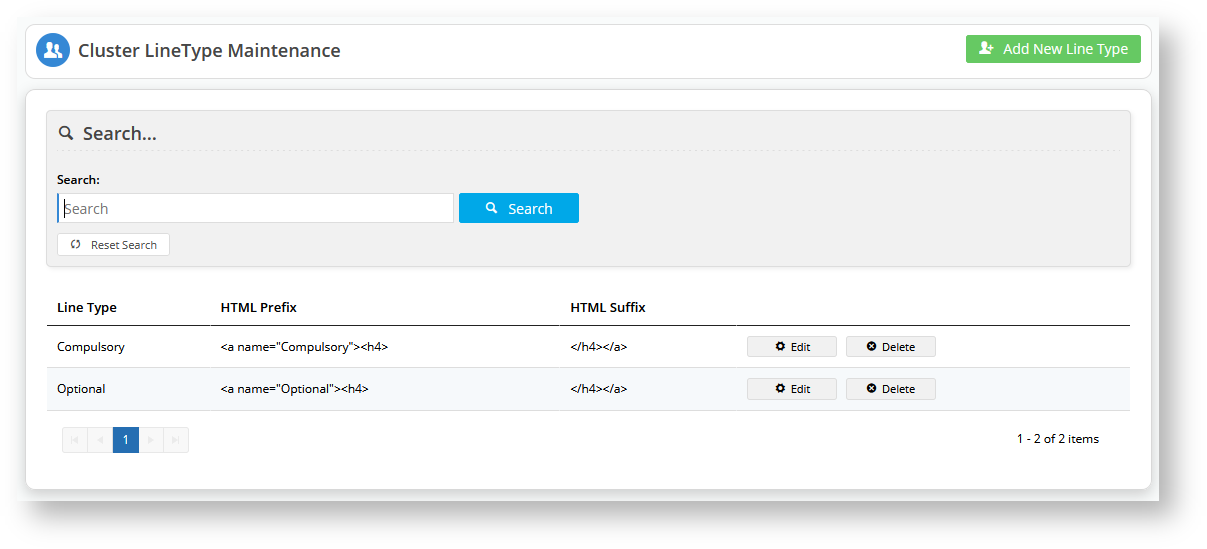...
This guide provides step-by-step instructions to setting up, configuring and configuring using clusters.
1. Switch on Cluster Maintenance
...
2. Add Cluster Line Types
A cluster 'line type' is used as a user-defined header used to sub-categorise group products in a cluster. As an example, suppose we sell school-related items and want to create a 'school year' cluster, say a 'stationery and book list' for Year 7s from a particular school. Items for the cluster may include stationery and textbooks etc. To simplify things, let's just focus on one product type - pens. We know that some products will be compulsory, others optional for purchasers. So we can create headers for two line types: 'Compulsory' and 'Optional'. (Note - you can also create a line type that allows customers to choose options from two or more products listed. For instance there may be various brands available for 'black gel pens' but the purchaser needs to buy only one. We will look at this line type later. (See Category Cluster Maintenance below.)
...
In Settings → Cluster Line Type Maintenance, click Configure to go to the 'Cluster Line Type' page.
- Click Add New Line Type.
- Enter details for Line Type, HTML Prefix, and HTML Suffix.
- Click Save. The line type will be listed in the list of line types for the when you configure a cluster.
- Create any other line types you need. For our example, repeat steps 3-5 to create the 'Optional' line type.
...
A category has to be enabled as a cluster to contain clusters in its Category Maintenance page. You can set an existing category as a cluster to contain clusters or create a new category firstfor this purpose. For our example, we will create a new category, then set it as a cluster. 'enable cluster' for it. Just as for other categories, a cluster category is maintained in Category Maintenance.
To 'enable cluster' for a category:
- Navigate to Products & Categories → Category Maintenance.
- In Add New Category..., enter the category name and click Create. The new category will be added to at the bottom of the list.
- To turn enable the category into a clusterto contain clusters, click Edit for the category.
- In Go to Enable Cluster , select and select 'Yes'.
- Click Save & Exit. In You are return to the Category list, this category is now displaying list of categories. Notice that next to this category, '0 clusters' instead of '0 products' is displayed.
4. Build a cluster
- In the Category list, hover over Options for the category and select Cluster.
- In Description, add the header for the cluster. For the example, we will add the header 'Compulsory'.
- In Type, select a line type. Here, we will select 'Compulsory'.
- To save this line type to the category, click Add None Product.
- Repeat steps 2 to 4 for each extra line type you need. For the example, we have added 'Optional'.
...






